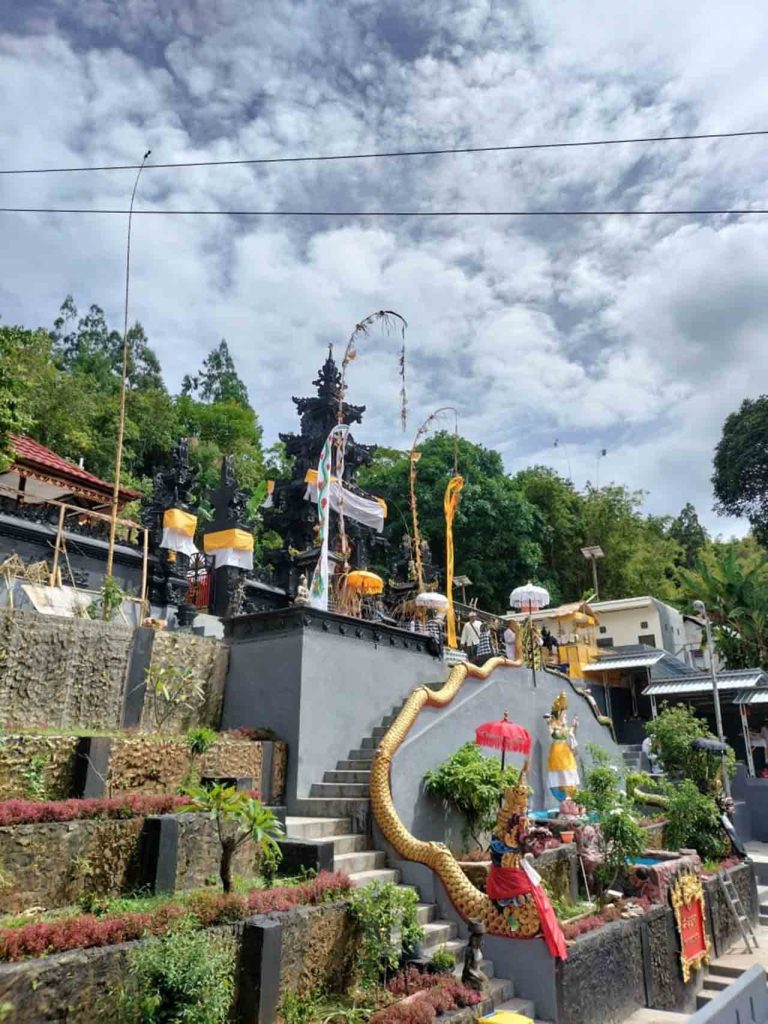Tanah Lot Temple, nestled on a rocky outcrop along Bali’s southwestern coast, stands as one of the island’s most iconic and spiritually significant sites.
Revered by Balinese Hindus, this sea temple is dedicated to the guardian deities of the ocean.
Its dramatic setting against the backdrop of crashing waves and sunset views has made it both a place of worship and a major cultural attraction.
The story of Tanah Lot dates back to the 15th century during the time of a revered priest named Dang Hyang Nirartha, a Brahmin from Java.
As part of his mission to spread Hinduism across the Indonesian archipelago, he journeyed to Bali during the reign of King Dalem Waturenggong, who welcomed him and supported his spiritual work.
Nirartha traveled through the island, guiding local communities in religious practices and establishing sacred sites.
According to local legend, Nirartha was drawn to the southern coastline of Bali by a divine light that seemed to radiate from the sea.
Following this spiritual signal, he arrived at a coastal area in the village of Beraban, in the Tabanan region.
There, he found a distinctive rock formation along the shore and chose it as a place to meditate.
At the time, the leader of the village, Bendesa Beraban Sakti, was resistant to Nirartha’s teachings, as he followed a different belief system.
Concerned about losing his influence over the villagers—who had begun to show interest in Nirartha’s teachings—Bendesa tried to drive the priest away.
In response, Nirartha is said to have used his spiritual power to move the rock on which he meditated offshore, transforming it into a small island.
This new site became known as Tanah Lot, meaning “Land in the Sea.”
Impressed by this miracle and the priest’s supernatural abilities, Bendesa ultimately accepted Nirartha’s spiritual authority and converted to Hinduism, along with the rest of the village.
Before departing Beraban, Nirartha left behind a sacred dagger, believed to possess the power to protect crops from disease.
This relic is preserved at Puri Kediri and is honored in ceremonies held at Tanah Lot every 210 days according to the Balinese calendar.
Another legend associated with Tanah Lot tells of Nirartha transforming his shawl into a guardian sea snake to protect the temple from evil forces.
This serpent, known for its distinctive black and yellow stripes and its potent venom, is said to still inhabit the temple’s base.
Additionally, a freshwater spring beneath the temple—despite its location in the saltwater sea—is believed to be a divine gift from the gods and is used for ritual purification.
Today, Tanah Lot remains a vital spiritual center and one of Bali’s most photographed landmarks.
Just to the north lies another temple, Pura Batu Bolong, perched on a natural rock arch that stretches out over the sea.
Both temples are part of the series of Sad Kahyangan, the six holiest temples on the island meant to maintain spiritual balance across Bali.
Visitors to Tanah Lot not only come for its religious significance but also to witness its stunning coastal vistas, especially during sunset.
Located around 13 kilometers from the town of Tabanan, it continues to be a powerful reminder of the island’s deep spiritual heritage and the enduring legacy of Dang Hyang Nirartha. (BT)
Image Source; tanahlot.id





